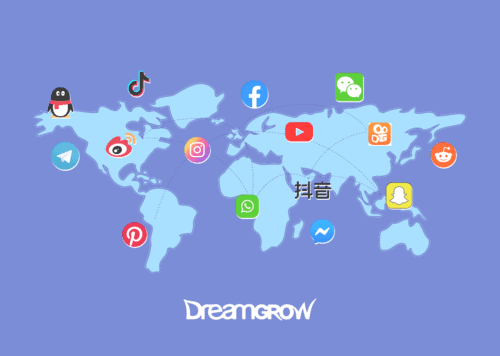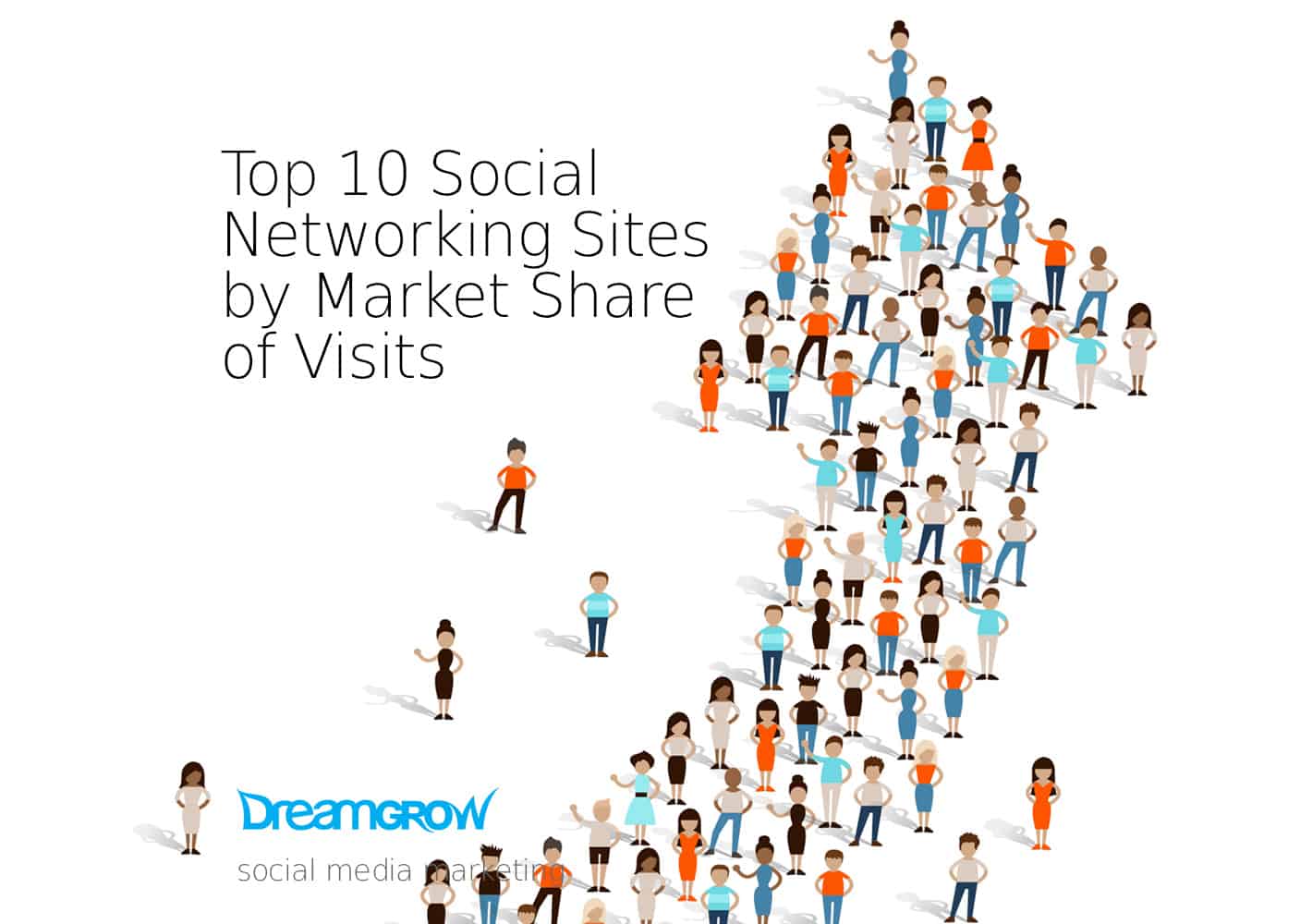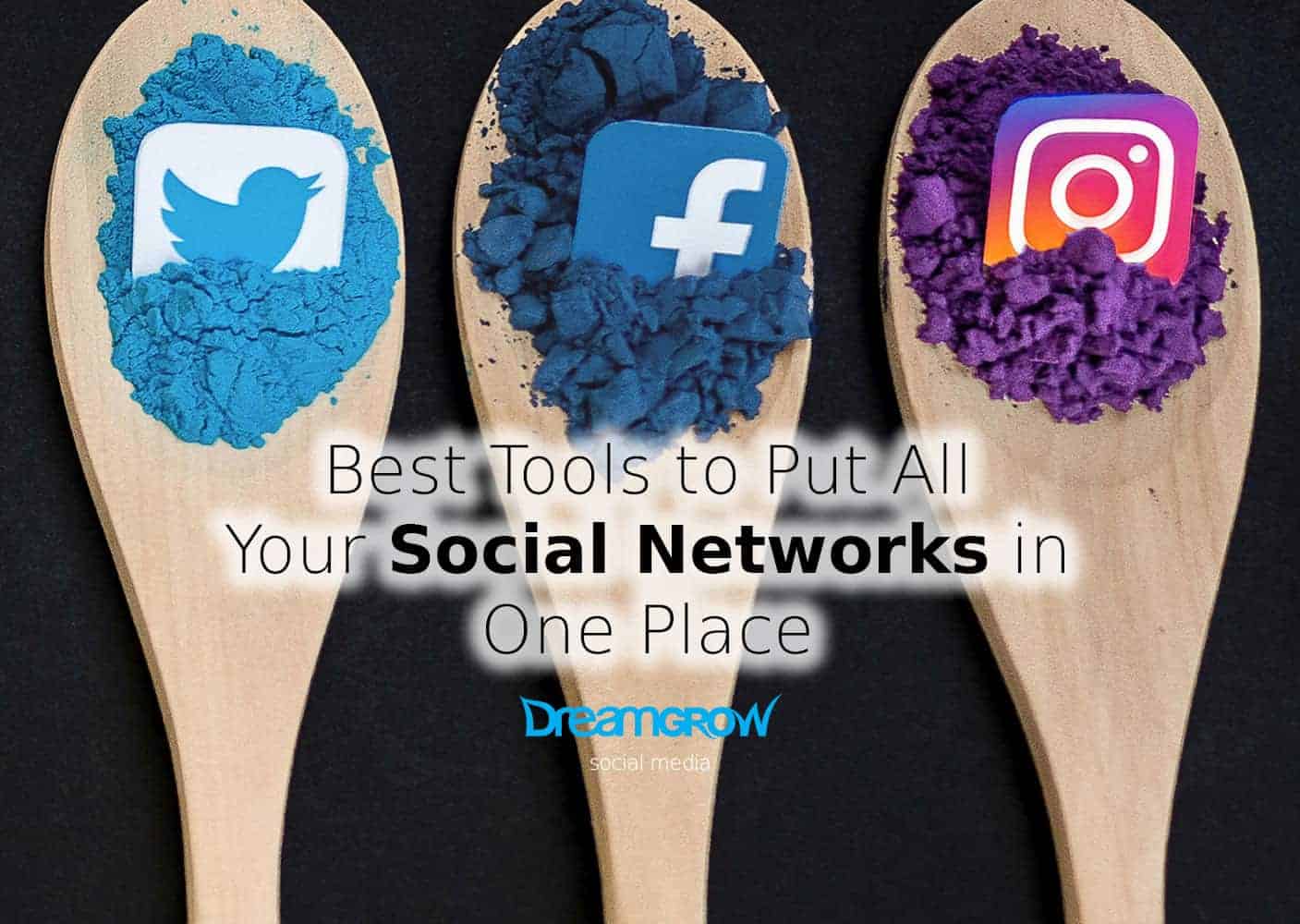Social networking platforms are locked in a never-ending game of high-stakes musical chairs.
Every year, the whims of a fickle public, the introduction of new players, and shifting global trends trigger a shuffle in social media’s most important leaderboard.
Aside from these shifts just being “generally quite interesting” to industry watchers, they’re also super useful for savvy digital marketers.
Knowing how deeply each of these platforms reaches into the global online community is critical to your company’s social media marketing efforts . As is understanding other nuances relating to a platform’s growth.
Choosing which social media network your brand is going to focus on is a very important decision, and one that shouldn’t be taken purely on a hunch.
Sure, a particular social media platform may “feel right” for your brand, but we recommend that you take a bunch of other variables into consideration before making the leap – “relative popularity” and “growth” being two of the most important.
To help your brand with this crucial decision, Dreamgrow maintains this post on the world’s biggest 15 social media platforms. It’s an up-to-date view on the movers, shakers, newcomers, and immovable monoliths that make up the social media landscape.
The Leaderboard: 2024’s Most Popular Social Media Platforms
Based on their respective number of monthly active users (MAU) in January 2024, here’s a list of the world’s 15 biggest social media platforms.
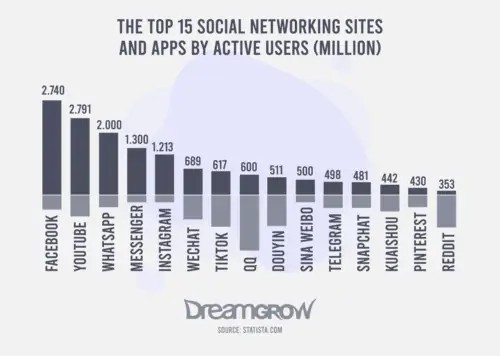
The most popular social media sites in 2024 are:
Facebook (2.96b)
YouTube (2.51b)
Whatsapp (2b)
Instagram (2b)
WeChat (1.31b)
TikTok (1.05b)
Messenger (931m)
Douyin (715m)
Telegram (700m)
Snapchat (635m)
Kuaishou (626m)
Sina Weibo (584m)
QQ (574m)
Twitter (556m)
Pinterest (445m)
Data source: Statista
Changes Since January 2021
Here’s a quick summary of how things were shaken up in the 24 months preceding the leaderboard snapshot above:
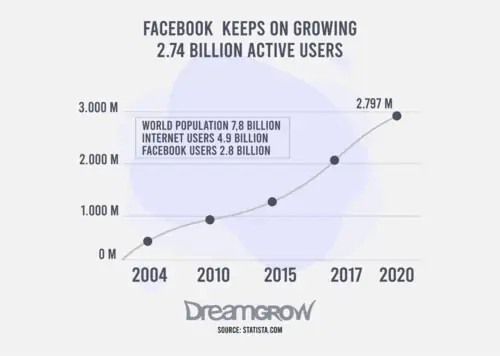
| Rank | Platform | Change in Rank | User Growth (since 2021) |
| 1 | No change | +220 million | |
| 2 | YouTube | No change | +220 million |
| 3 | No change | No change | |
| 4 | Up 1 spot | +779 million | |
| 5 | Up 1 spot | +97 million | |
| 6 | TikTok | Up 1 spot | +361 million |
| 7 | Facebook Messenger | Down 3 spots | +369 million |
| 8 | Douyin | Up 1 spot | +115 million |
| 9 | Telegram | Up 2 spots | +200 million |
| 10 | Snapchat | Up 2 spots | +137 million |
| 11 | Kuaishou | Up 2 spots | +145 million |
| 12 | Sina Weibo | Down 2 spots | +73 million |
| 13 | Down 5 spots | -43 million | |
| 14 | New Entry | +194 million | |
| 15 | Down 1 spot | +3 million |
Reddit is the only platform to have fallen off the leaderboard. It was previously in the 15th spot with 430 MAU.
The 15 Biggest Social Media Networks in 2024
1. Facebook – 2.96b Monthly Active Users
Facebook is the undisputed heavyweight champion of social media platforms.
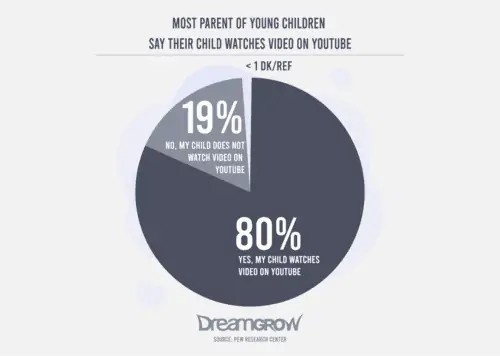
While it can’t take credit for getting everything started, that honor goes to SixDegrees (RIP), Facebook is the social media juggernaut that not only showed the world what the internet can be, but also fundamentally changed the way humans interact with each other.
The company’s turbulent early days, continued association with epic controversies, and Mark Zuckerberg’s “terrifying” gamble on virtual reality haven’t stopped it from maintaining mind-boggling growth since its 2004 launch.
It took Facebook only ten months to reach a million users and only eight years to reach a billion. As of January 2024, Facebook boasts 2.96 billion monthly active users – a number that grows with roughly 500,000 new users every day, or six new Facebook users every second.
Of its enormous user base, a staggering 2 billion people (that’s 68%) use Facebook every day. That’s 5% more than Instagram and an incredible 29% more than TikTok.
Despite its immense popularity, Facebook isn’t the most visited website in the world. Its 17.6b monthly visits is bested by YouTube’s 33.6b and totally eclipsed by Google Search’s 88.6b. Fourth and fifth in this list is Twitter (6.6b) and Instagram (6.4b) respectively. All of this data is from Similarweb’s Top Websites page.
Marketing success on Facebook is very dependent on understanding the nuances of its ever-evolving news-feed algorithm. Just like most social platforms, the folks at Facebook are constantly toying with the black box that determines what social media users see.
Recent updates to the algorithm have seen the company place bigger emphasis on social media posts that are likely to result in engagement. The social media platform also claims to have started de-prioritizing content that appears to be obvious clickbait or clearly aims to misinform users.
Something worth noting is that Facebook is beginning to develop a reputation as being out of touch with a younger generations- a demographic that the world’s leading social network is struggling to reach and retain.
Here’s some data that backs up this sentiment.
In 2022, 32% of US users aged 13-17 use Facebook. In 2015, this figure was 71%.
In comparison to the above, 66% of US teenagers claimed to be using TikTok in 2022.
Interestingly, some industry experts feel that this is a result of the platform’s culture rather than features. This notion isn’t new but it’s certainly become detrimental to Facebook as competitors that Gen Z regard as more palatable entered the market.
Facebook’s own research into the matter suggests that the company is very much aware of the trend, stating that this is most likely because content is perceived to be “boring, misleading, and negative.”
Good news for Mark Zuckerberg’s flagship is that Facebook leads the social media world in commercial interactions. When people buy something on social media, they use Facebook more than any of its competitors.
From the social media apps in our list, only YouTube beats out Facebook as the most popular social platform on which to start a buying journey, albeit very narrowly. 19% of US shoppers kick off their search for a product on Facebook while 20% choose the video sharing network. Of the study’s respondents, 15% chose Instagram and 11% chose Tiktok.
2. YouTube – 2.51b Monthly Active Users
The second-most popular social media platform on our list, YouTube comes in at a super-impressive 2.29 billion registered users.
However, since ANYONE can enjoy YouTube content, regardless of whether or not they’re a registered user, this figure may not be the most accurate representation of the platform’s true popularity.
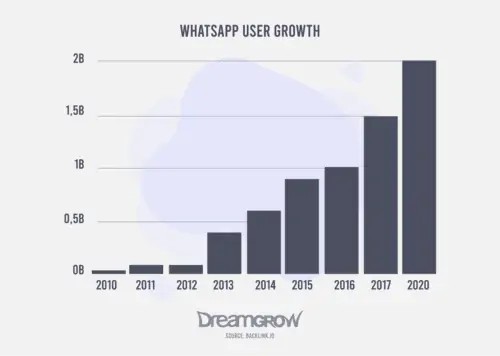
In fact, as we mentioned earlier, there are some notable metrics that suggest YouTube might be considerably more popular than its closest competitors.
According to Similarweb, the Google-owned platform outperforms its noteworthy rivals in one critical area. The platform’s Average Visit Duration is an impressive 20:30 minutes. Of its noteworthy rivals, Whatsapp comes in second with 17:15 minutes while Twitter (10:35) barely manages to keep Facebook (10:27) out of the top-three.
When it comes to keeping eyes glued to devices, it stands to reason that a social networking site built on longer-form video consumption should win this race. It seems like a case can be made that, when it comes to longer sessions, quality of content trumps a user experience that’s been engineered to be addictive.
Like most of the social networking sites we’ll be discussing in this post, YouTube has an interesting history. Launched in 2005, the video-sharing platform was initially intended to be a dating service, with the founders reportedly publishing ads on Craigslist to entice women into posting videos of themselves talking about their ideal partners.
The (rather understandable) lack of response resulted in the site being opened up for videos of any kind – a decision that would ultimately make Steve Chen, Chad Hurley, and Jawed Karim multi-millionaires.
The company overcame numerous technical and legal obstacles on its way to becoming not only the world’s leading video-sharing platform but also the target of a $1.65 billion acquisition by Google. All of this by November 2006 – only 16 months after its official launch.
YouTube is incredibly reliant on their dedicated user generated content creators. In fact, 64% of surveyed social media users say that they follow specific creators on the platform. This is considerably more than its nearest three rivals Facebook (51%), Instagram (33%), and TikTok (30%).
Taking this stat into consideration, it’s fair to say that YouTube has played a significant role in the democratization of broadcasting and launching the careers of professional content creators.
Research from 2022 indicates that YouTube is also by some distance the platform of choice for the 2 million humans who describe themselves as professional content creators. 1 million of them publish their content on YouTube while only 500,000 opt for its nearest rival, Instagram.
Interestingly, despite paying their top creators for content and being one of the fastest-growing social networks, TikTok still isn’t a significant player in this space, with fewer than 200,000 professional creators publishing their content here.
3. WhatsApp – 2b Monthly Active Users
Founded in 2009 by two former Yahoo! employees, WhatsApp’s original goal wasn’t to be an instant messaging (IM) app, but rather to simply show “statuses” next to the names of each entry in a user’s address book.

“At some point it sort of became instant messaging,” Alex Fishman, a friend of founder Jan Koum, told Forbes.
This accidental evolution led to the app dominating the free IM market and would also end up making the founders immensely wealthy – the latter thanks to Facebook’s (Now Meta) $19+ billion acquisition in 2014.
At the time, the acquisition reeked of desperation – a cynical and clumsy purchase that recalled the early days of the dotcom boom. WhatsApp was nowhere near being profitable and it offered little user-facing functionality not already covered by Facebook’s own IM product, Messenger.
The move has since been reinterpreted by industry experts as a strategic win for Zuckerberg and co, with more effective data mining and improved access to developing markets quoted as solid justifications for the purchase, if not the price.
The 2018 launch of WhatsApp Business was a game-changer for the platform. IM is a notoriously tough service to monetize – especially if the company’s values prohibit monetizing its users in ways that compromise its UX.
WhatsApp’s ubiquity makes it an ideal platform for businesses and customers to interact on. It also lends itself to several other B2C functions that are incredibly useful and easy to monetize.
Businesses in India and Brazil, specifically, have adopted WhatsApp Business, with the tool considered essential in economies where small businesses can’t afford to hire dedicated support staff.
It’s to Meta’s credit that they managed to develop the product commercially without compromising users’ goodwill towards it. This achievement has seen WhatsApp remain the most popular IM tool on the market today despite some well-founded fears over privacy and the short-lived loss of its reputation in 2021.
WeChat is the only other chat platform that comes close to WhatsApp’s dominance, but since the two platforms operate in exclusive territories, it’s closest rival is actually Facebook Messenger with roughly 47% of its user base.
4. Instagram – 2b Monthly Active Users
No statistic does justice to the role that Instagram has played in shaping the world’s collective ego over the past 13 years. It’s not an exaggeration to say that the app has not only reinvented the machine that makes people famous but also redefined what “famous” means.
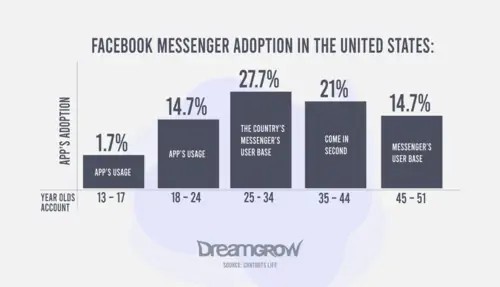
Founded by former Google employee, Kevin Systrom, in 2009, Instagram is the product of an incredibly diligent analysis of the social media landscape at the time.
An early round of seed funding allowed Systrom to pivot the app, which initially focused on attracting whiskey and bourbon aficionados, into something broader – something with industry-leading image manipulation and a far more immersive social networking experience than any other image-sharing service at the time.
The result was an absolute beast of a social network. By April 2012, the month Facebook acquired it for $1 billion, Instagram had grown its user base to 35 million. Three months later, it stood at 80 million users. By June 2016, it had reached the landmark 500 million figure.
And the platform’s growth rate refuses to plateau. Even when compared to the all-conquering newcomer, TikTok, the speed with which Instagram attracts new users is astonishing. Despite all the hype surrounding TikTok and its relevance to a new generation of users, Instagram still blasts their growth stats out of the sky. See our “Changes since January 2021” table above for proof.
Back to the topic of Instagram’s influence on global culture and economy, one of the app’s most enduring contributions was its role in the creation of influencers. For better or worse, certain users’ popularity gave their profiles an “aspirational” slant, which soon resulted in the birth of a whole new marketing channel that empowered regular folk to monetize their digital fame.
It’s also an immensely popular social media platform for B2C marketing, with more than 70% of US businesses actively using it as a marketing channel. This can be attributed to Instagram’s remarkable engagement rates in comparison to Facebook.
Despite offering relatively similar content-interaction features, Facebook’s engagement rate is 75% lower than that of its sister company. Instagram reports an average engagement rate of 0.60% and Facebook 0.15%. Although neither of these two old timers can compete with TikTok, which boasts a staggering engagement figure of 4.25%.
Instagram is also the second most popular platform amongst users seeking customer support. 35% of US consumers claim to get in touch with businesses’ instagram accounts when they need help or want to report a problem. This figure is somewhat dwarfed by Facebook’s 60%, though. YouTube wins the bronze medal with 33% and TikTok misses out on the podium with 21%.
Despite its immense popularity, Instagram is still far away from being the biggest time-sink on our list. The average US adult spends around 30.1 minutes per day on Instagram – the same figure as Facebook. The two platforms are tied for fifth place on this leaderboard, behind TikTok (45.8 minutes), YouTube (45.6 minutes), Twitter (34.8 minutes), and Snapchat (30.4).
5. WeChat – 1.31b Monthly Active Users
With an incredibly wide range of functions that allow users to do everything from sending text messages and conducting video calls to processing digital payments and playing video games, it’s no surprise that WeChat has such a high position on our list.
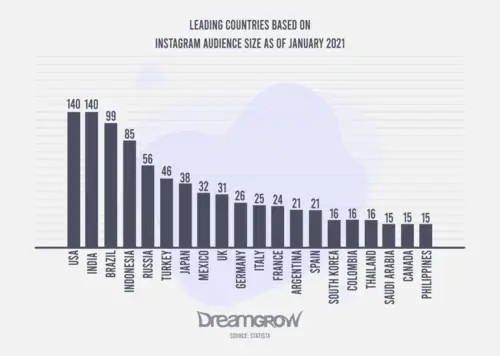
What makes its position so remarkable is the fact that WeChat is only available in China. That’s right, 1.31 billion of the country’s 1.41 billion people are registered WeChat users. That’s 93% for those who don’t have a calculator handy.
Obviously, we can’t assess WeChat’s popularity in a global sense, with virtually all the social networking platforms we take for granted in the West being blocked by the country’s authoritarian government.
Having said this, there is one statistic that perfectly illustrates WeChat’s ubiquity when compared to “Western” social media platforms. The average WeChat user spends an astonishing 82 minutes per day on the app.
Compare this to the US usage statistics we discussed earlier and your head might start to spin. In case you missed it, TikTok is currently the leader in this space with 45.8 minutes per day.
One of the biggest contributing factors to WeChat’s popularity has been its success as a workplace communications platform. In a survey conducted by the South China Morning Post, 90% of respondents said that they use the app for work purposes.
WeChat has become so dominant that the platform – by itself – accounts for 34% of all data traffic in China. Let that figure percolate for a while. More than a third of all online activity in China happens on WeChat.
6. TikTok – 1.05b Monthly Active Users
There are overnight success stories and then there is TikTok. The video-sharing platform burst onto the international scene in 2017 and quickly started racking up adoption figures that made competitors weep onto their keyboards.
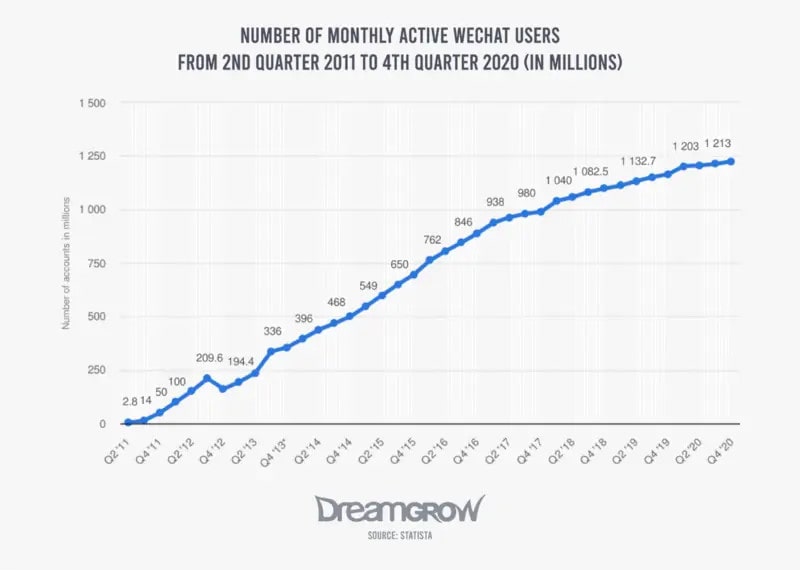
Two years after its emergence, TikTok was in the top five of the world’s most downloaded apps. A year later, in 2020, it was number one, the fledgling social network having outperformed its nearest rival, WhatsApp, by a staggering 250 million downloads. And a year after reaching this milestone (September 2021), TikTok was inducted into the prestigious “one-billion users” club. That’s less than half the time it took Instagram to reach the figure.
We mentioned earlier how none of its competitors can come close to TikTok’s engagement rates. But that’s not the only key area where Gen Z’s favorite video sharing app outshines the other social media platforms on our list.
TikTok content gets 44% more comments than Instagram Reels. Each of the platform’s videos have an average comment rate of 0.09%, compared to Instagram Rees’ 0.04%
Brands post double the amount of TikTok videos per month (16.5) than Instagram Reels (9.4) and YouTube Shorts (7.7).
Interestingly, Instagram Reels still score a significantly higher watch-rate (13%) than TikTok videos (9%). This is likely to be a consequence of Instagram users having more of a “quality over quantity” approach to publishing Reels when compared to the “anything goes” mindset of the average TikTok user.
From a marketing perspective, brands have started to figure TikTok out over the past few years. The platform’s users tend to embrace content that’s slightly less “polished” than its closest competitor (Instagram).
Brand uniformity is also a much bigger deal on Instagram, with businesses striving to maintain a consistent aesthetic and tone across their content. This careful, engineered approach tends not to sit well with TikTok’s user-base.
7. Facebook Messenger – 931m Monthly Active Users
It says a lot about WhatsApp’s popularity that Messenger – a direct competitor that’s effectively embedded into the functionality of the world’s most third-most popular website – refuses to outgrow them.
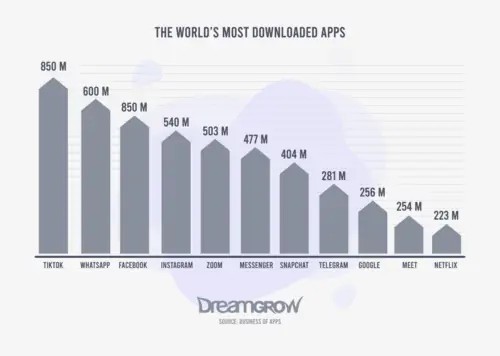
Or maybe it says a lot about Messenger.
When it comes to functionality and awareness of user needs, there are several reasons why people are choosing green over blue.
WhatsApp doesn’t require a social media account to access – only a telephone number.
Facebook Messenger consumes more bandwidth than WhatsApp, making it less popular amongst cost-conscious users.
Messenger is only now beginning to roll out end-to-end encryption, a crucial security feature that WhatsApp implemented in 2016.
Messenger’s initial incarnation was “Facebook Chat” – a simple IM feature that was launched into the Facebook environment in 2008. Noting Chat’s potential as a standalone app with its own unique commercial ecosystem, Facebook overhauled the service and rebranded it as “Facebook Messenger” two years later.
Unlike WhatsApp, Messenger’s custodians had no issue with introducing monetization features into the app’s core functionality. As a result, Messenger was the first messaging platform that offered businesses access to customers and prospects.
It might come off second-best when compared to its main rival, but Messenger is still an exceptionally successful app – especially for business users. There are more than 40 million business users on Facebook Messenger and more than a billion messages are sent between businesses and consumers every month.
8. Douyin – 715m Monthly Active Users
To keep it simple, Douyin is TikTok for a Chinese audience. The two platforms have the same parent company (Chinese tech giants, ByteDance) and the same core functionality, but are two different social media sites, servicing two separate territories.

Interestingly, Douyin offers a number of user-facing features that aren’t present in its Western counterpart. Most notably, these features include a reverse image search feature that allows users to find other content that features products they might want to research and buy.
This tech can also be used to find content featuring other people that the user may have an interest in. It’s somewhat comforting that TikTok hasn’t shown any interest in porting this feature into their product.
Douyin has also poured their resources into establishing their app as the world’s leading social commerce platform. Over the past number of years, the app has empowered users to generate affiliate income by featuring products in their videos. At the same time, the company has made it incredibly easy to purchase these products – something that can be done in just three taps.
9. Telegram – 700m Monthly Active Users
Telegram makes its debut in our top social media sites leaderboard after a lengthy period of remarkable growth.
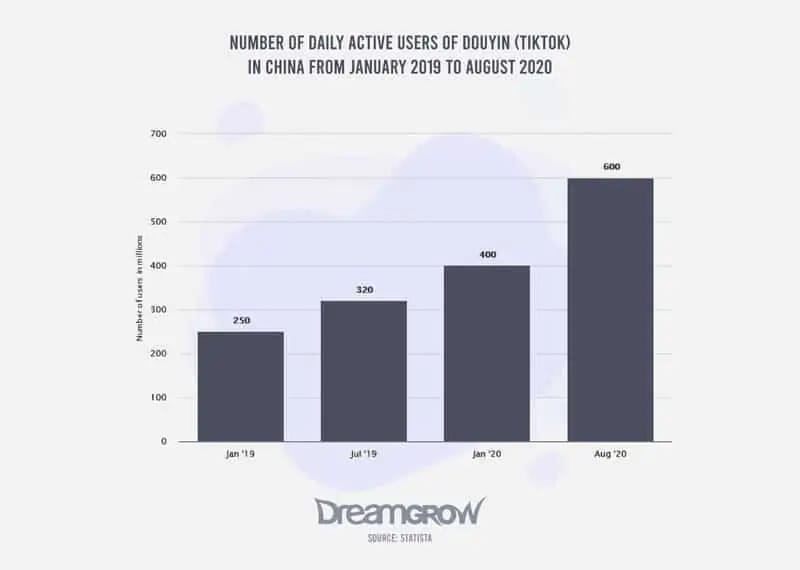
In early 2021 the instant messaging app, which offers some basic social networking features, was able to take advantage of widespread concerns over WhatsApp’s privacy and security.
During roughly the same period of time (January 1 – January 21), Telegram gained approximately 25 million new users. That’s a 5% increase in their user base in just three weeks! It also became the world’s most downloaded app for both Android and iPhone users during a month that WhatsApp would rather forget.
To CEO Pavel Durov’s credit, Telegram capitalized on their overnight success by rolling several extremely useful features that further differentiated themselves while also catering to the needs of erstwhile WhatsApp users.
It seems unlikely that Telegram would overtake WhatsApp or Messenger as the world’s favorite IM app. But, considering their success in satisfying the needs of a very large user-segment, they might not need to.
10. Snapchat – 635m Monthly Active Users
Few people would have guessed that an app rejecting the notion of “once it’s on the internet, it’s forever” would thrive the way Snapchat has.
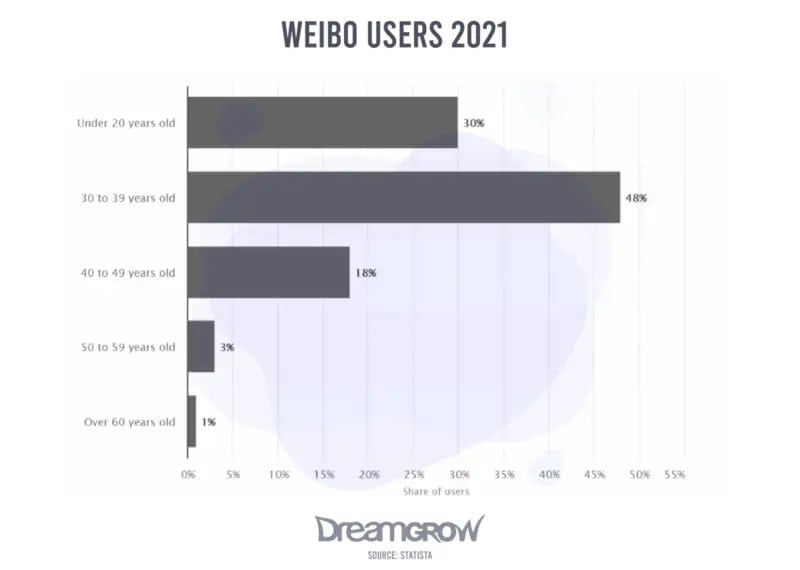
The photo and video-sharing platform became famous for only displaying users’ content for a limited time before it’s deleted. Forever. This infused each Snapchat interaction with an immediacy that resonated with a younger generation of internet users who live on their mobile devices.
It also helped that the app broke the mold when it came to augmented reality filters and lenses – features that instilled Snapchat interactions with a creative irreverence missing from other social networks.
In recent years, the company has doubled down on accessible AR experiences and is arguably the global leader in this niche. Snapchat has poured their considerable R&D resources into developing several commercial applications for this tech.
Snapchat shareholders will be hoping that the success of these B2C-friendly features would lead to increased profits (the company is notoriously unsuccessful at earning more than it spends) and possibly even a repeat of 2021’s success on the stock market.
11. Kuaishou – 626m Monthly Active Users
China’s 1.41 billion people absolutely love sharing and live-streaming video. So much, in fact, that we find ourselves talking about the second app of its kind that’s focused exclusively on the Chinese market.
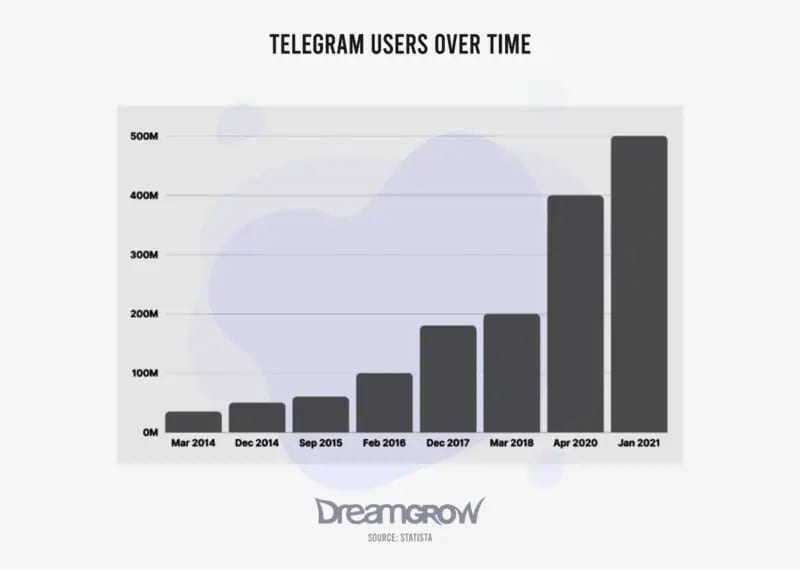
Kuaishou is the territory’s second-biggest video-sharing social network, currently sitting with around 88% of Douyin’s total active users. Interestingly, this figure was at 80% in mid 2021, meaning that there might actually be a contender for “China’s Most Popular Video-Sharing Platform” title.
Despite their overt similarity, there are a number of differences between the two social networks. Unique functionality and curation algorithms mean that both social media sites attract relatively unique audiences – and it’s not hard to notice obvious differences in the content they publish.
Here’s a summary of the most interesting ways these two leaders in video sharing differ from each other.
Kuaishou users tend to publish content that showcases everyday life that frames them as ordinary people. Douyin’s users focus more on aspirational and trendy videos that make use of digital filters and eye-catching virtual effects.
Kuaishou attracts an older demographic than its main rival. 25-34 year olds make up 43% of the app’s user base. Douyin is more popular amongst younger users, with 40% of its users falling in the 19-24 category.
Lifestyle advertising (like brand challenges) is more common on Douyin than on Kuaishou, where advertisers prioritize metric-focused ad campaigns (like app downloads).
12. Sina Weibo – 584m Monthly Active Users
Let’s keep things simple for readers who aren’t familiar with Chinese social networking sites: Sina Weibo is the country’s version of Twitter. It’s a microblogging platform that enables users to share (carefully scrutinized) opinions and the usual media you’d associate with an app like this: videos, memes, images, links, and so forth.
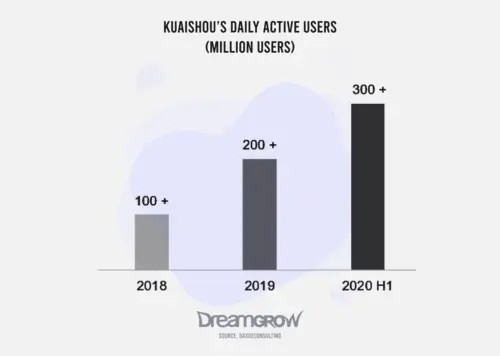
Despite the two platforms’ similarity, Sina Weibo was quick to implement user-facing features that Twitter has been hesitant to roll out. Users are able to host live-streaming sessions, upload Instagram-style stories, and Snapchat-style disappearing videos.
Sina Weibo was launched in 2009 and very quickly started scratching the (considerable) itch caused by Twitter’s government-mandated departure. The app’s effectiveness at filling this void became clear in 2012 – a year in which the app grew an astonishing 73% and reached the 500m-user milestone.
13. QQ – 574m Monthly Active Users
Sadly for Chinese tech giants, Tencent, their once-immovable stalwart in the social communication space is the biggest loser in 2024’s social site leaderboard.
Not only did QQ tumble further down the standings than any of its rivals (five places), it’s also the only property that reported negative MAU growth (-43m users) since we last visited this topic.
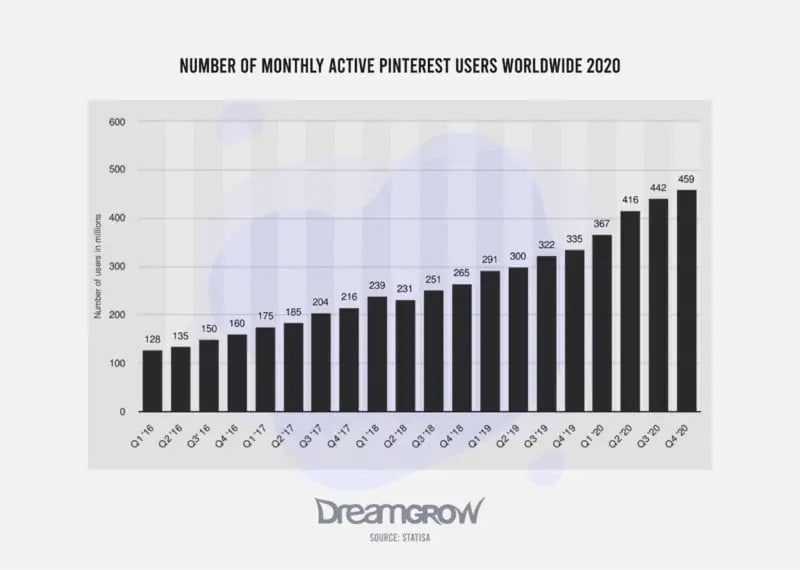
The app, launched in the twilight of the dotcom boom, has struggled for relevance in recent years. Concrete reasons for the app’s decline are hard to find, but the most likely is that Tencent’s current IM darling, WeChat, is cannibalizing the older sibling’s growth, a notion supported by one of the conglomerate’s senior executives.
Launched under the name OICQ in 1999 as a downloadable instant messaging service, the platform quickly became China’s most popular digital contact platform and played a pivotal role in “killing” email in the world’s most populous country.
QQ’s early rise to dominance as a business communication platform was helped by the software’s exceptional handling of file transfers. This created a network effect where companies simply HAD to be on QQ because, well, all their partners, vendors, and clients were already using it.
If it feels like the most interesting thing about QQ is its history, that’s probably because it is. Stay tuned to find out if the social media site will somehow recover its relevance, or if it’ll continue sliding towards social media obscurity.
14. Twitter – 556m Monthly Active Users
In January 2022, when Elon Musk first started publicly flirting with the notion of buying Twitter, few could have predicted the drama that would ensue.
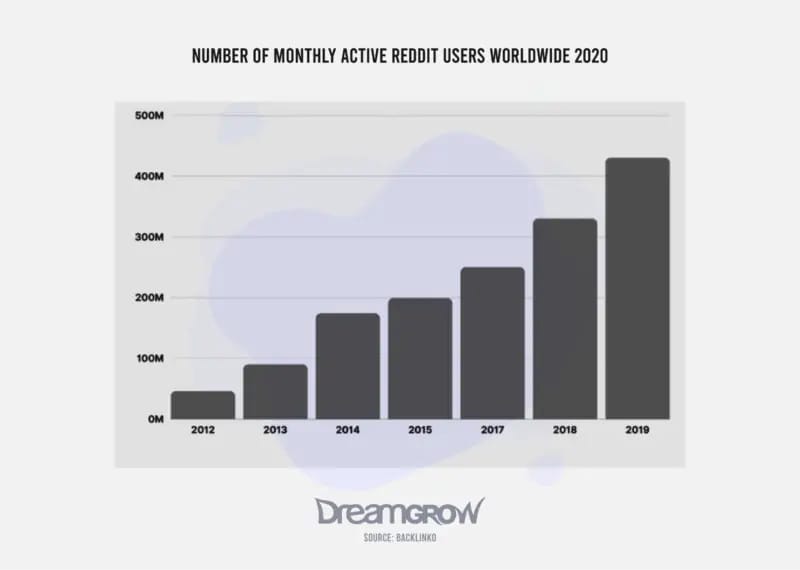
The Tesla founder (and Earth’s intermittent wealthiest human) followed his announcement with a series of sometimes ingenious, often baffling maneuverings. The end result was a $44b acquisition of the OG microblogging platform – considerably more than it was worth at the time.
For those who enjoyed the drama that played out before the takeover, more entertainment was in store. In the months that followed, Musk publicly toyed with core product features and policies, making (and firing) many enemies in his crusade against online censors that oppose his endgame.
And while the world gaped at what might either be a genuine revitalization or a train-wreck, Twitter blasted its way into our top-15, displacing the venerable content aggregator, Reddit, in the process.
Here are some noteworthy statistics covering the period since Musk’s involvement, many of them contradicting pessimistic observers’ predictions for the app.
Twitter’s advertising grew by 2.1% between October 2022 and January 2024.
Android users spent, on average, 21 minutes more on the app in 2022 than in 2021 – an increase of 6.7%.
Twitter’s web traffic referrals jumped 34.3% in 2022, placing it behind Facebook as social media’s second-most effective promoter of third-party content.
15. Pinterest – 445m Monthly Active Users
Who knew that digital pin boards would become such a big deal? Seriously, we’re not being rhetorical… we really want to know. Who knew??
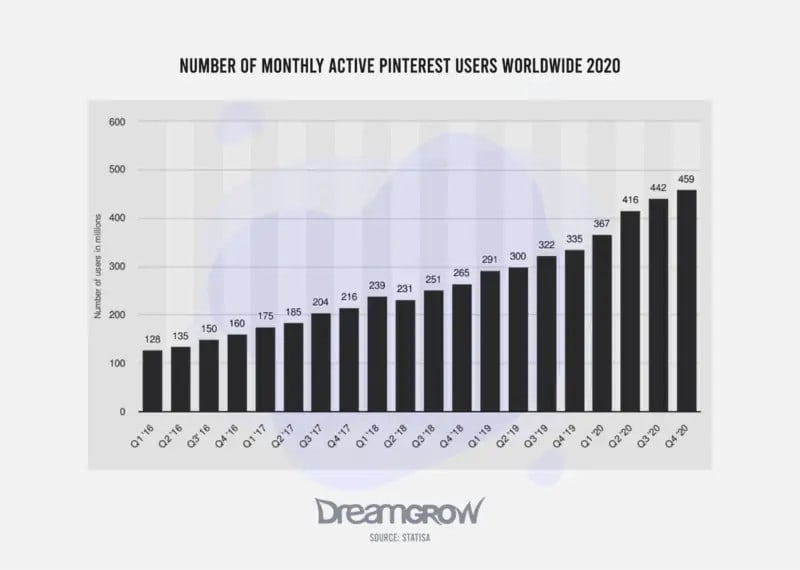
As odd as it might seem for a platform with such an incredibly simplistic premise to reach these heights, this fact remains: Pinterest is our number 15 with 445m million users. Although it’s worth noting that the social media site has failed to maintain the astonishing growth it experienced in 2020.
Data from the company’s 2022 Q2 shareholder report revealed a number of rather worrisome user-acquisition stats – most notably, the overall MAU loss of 5%.
Our research still has the platform in the black as far as MAU growth is concerned, albeit barely. Since we last published this report, Pinterest has only acquired 3m new users; no doubt a very troubling fact for its shareholders.
In Conclusion
There you go. The 15 top social media sites and apps. Hands up if you never thought we’d get to the end of this gigantic list.
In all seriousness, knowing as much as possible about a platform before you start promoting your brand on it is absolutely critical to social media marketing success.
Different functions and features make certain platforms more appropriate for one brand than another. At the same time, different legacies and cultures also attract specific audience demographics.
Build solid insight into all of these variables and your next social media campaign is far more likely to show the returns your business deserves.
Looking to use social media to make money? Consider starting a dropshipping business, getting into selling on Amazon with tools like JungleScout, or build a blog!
